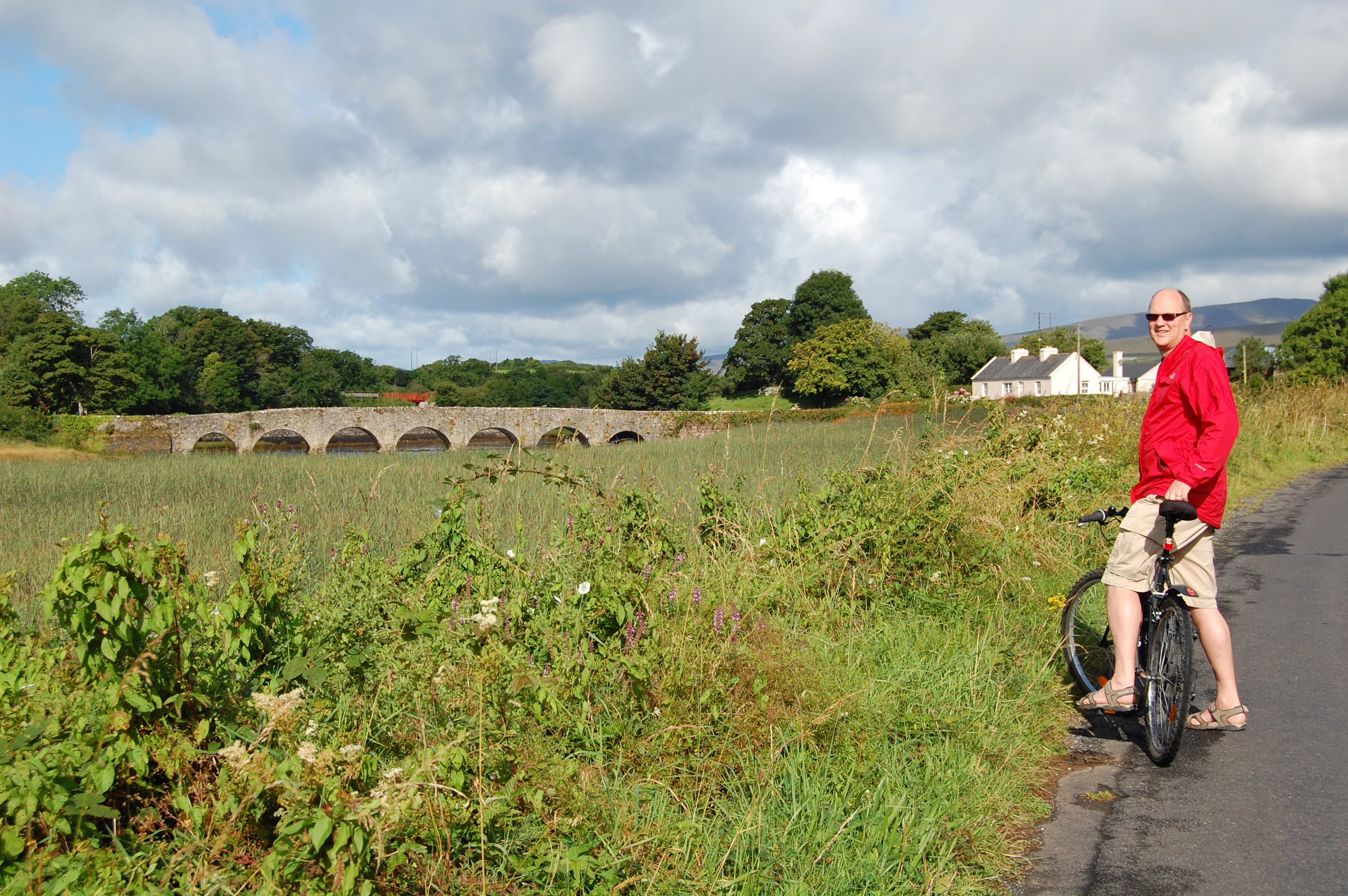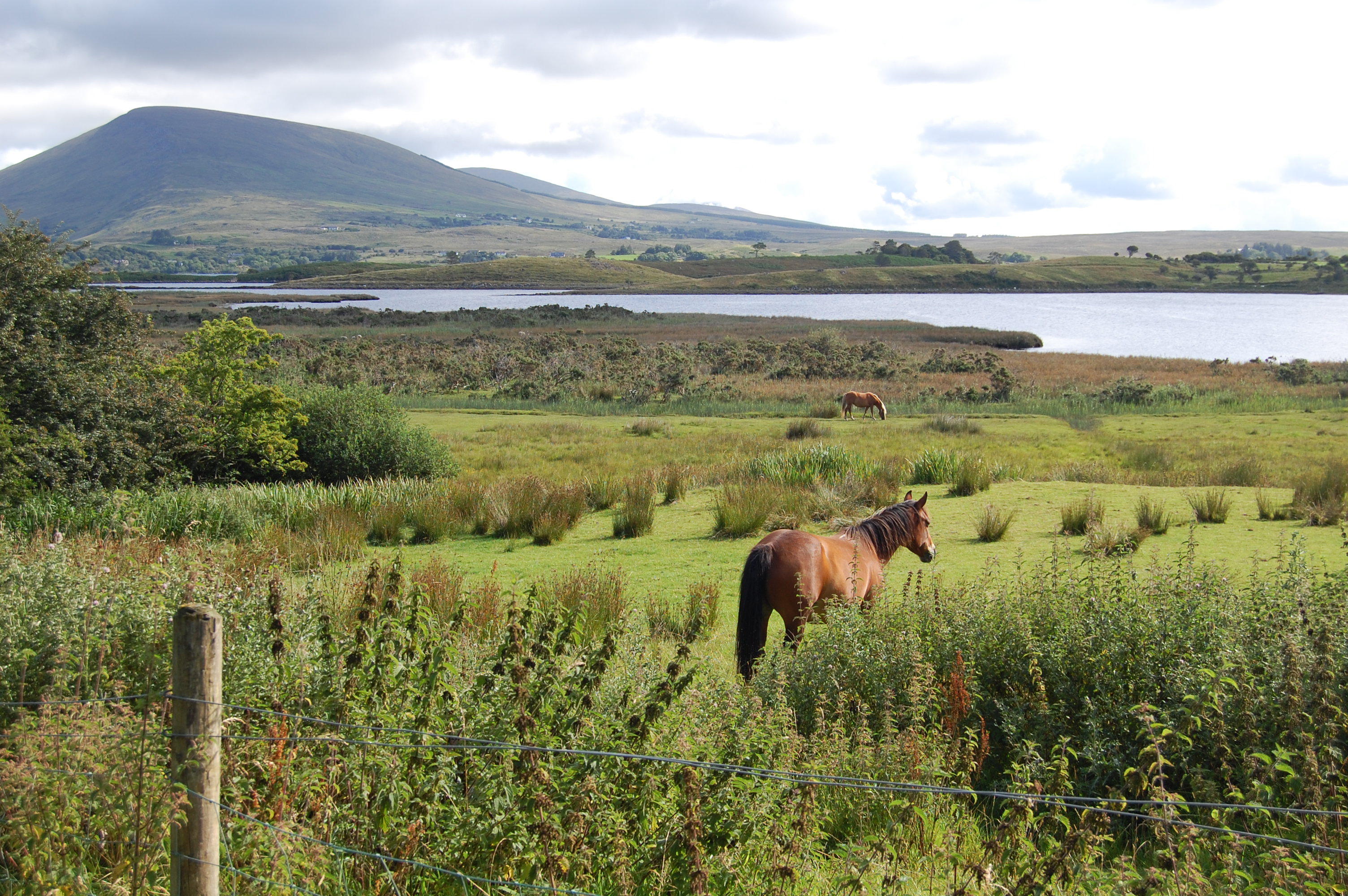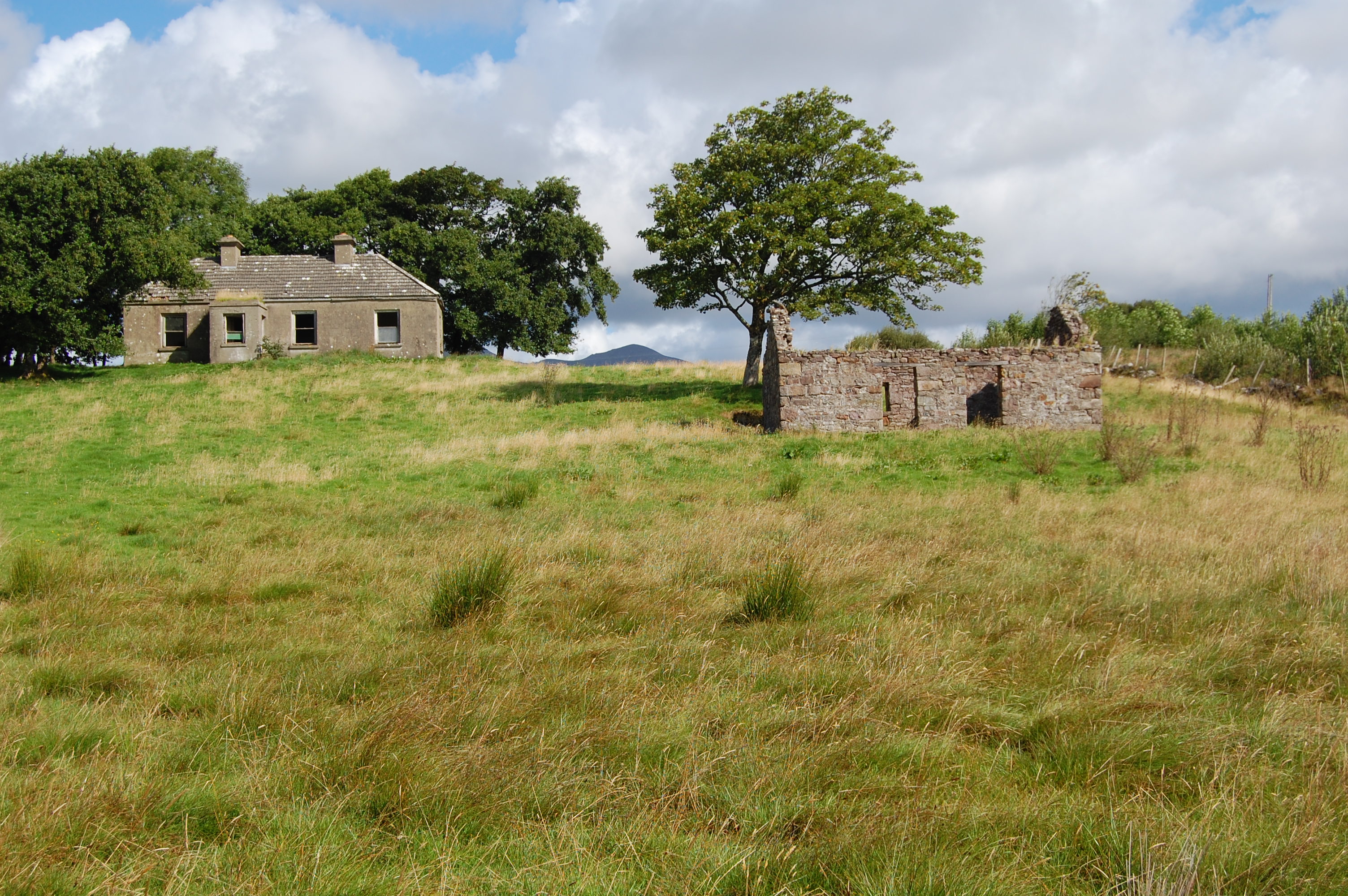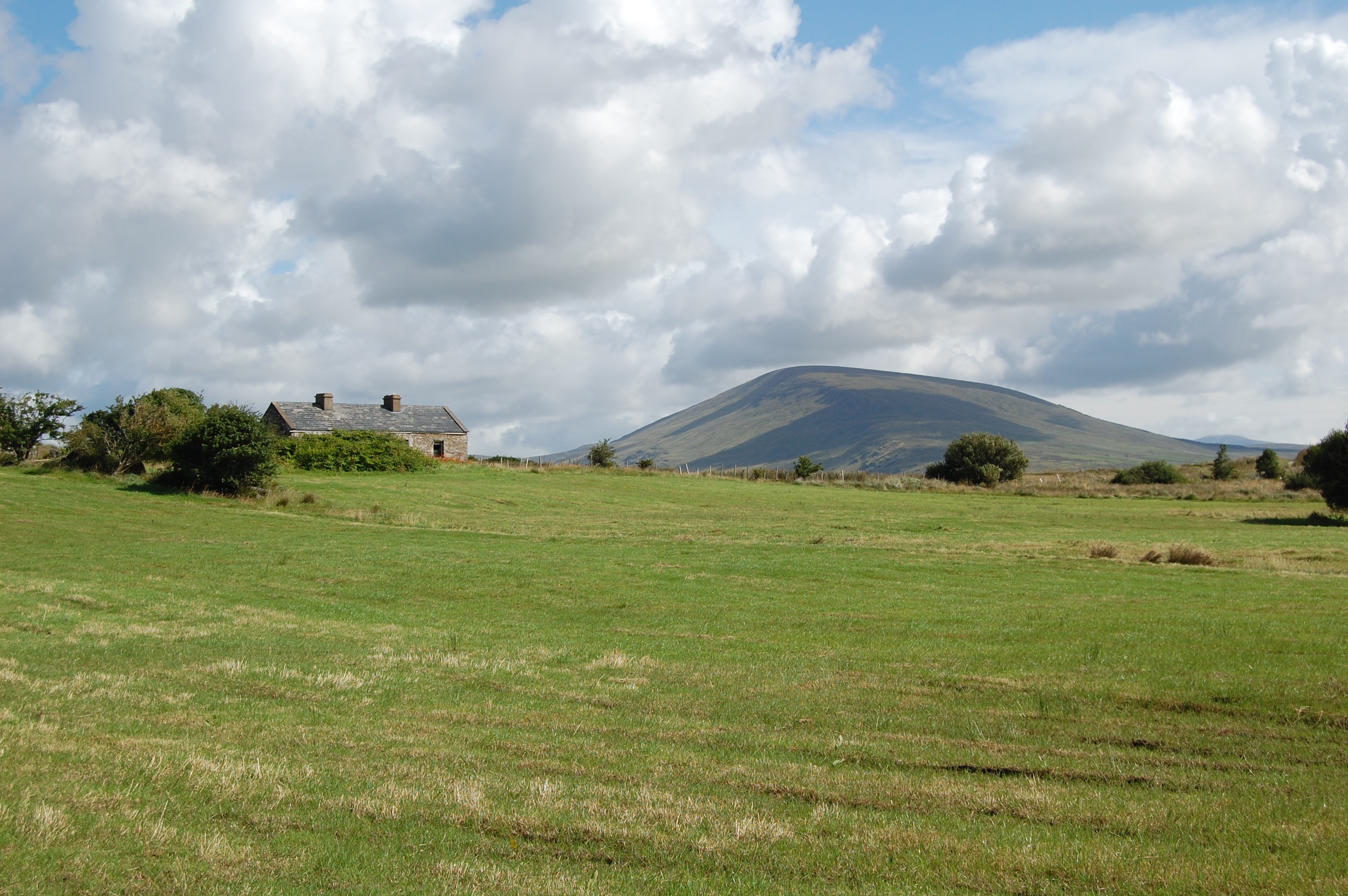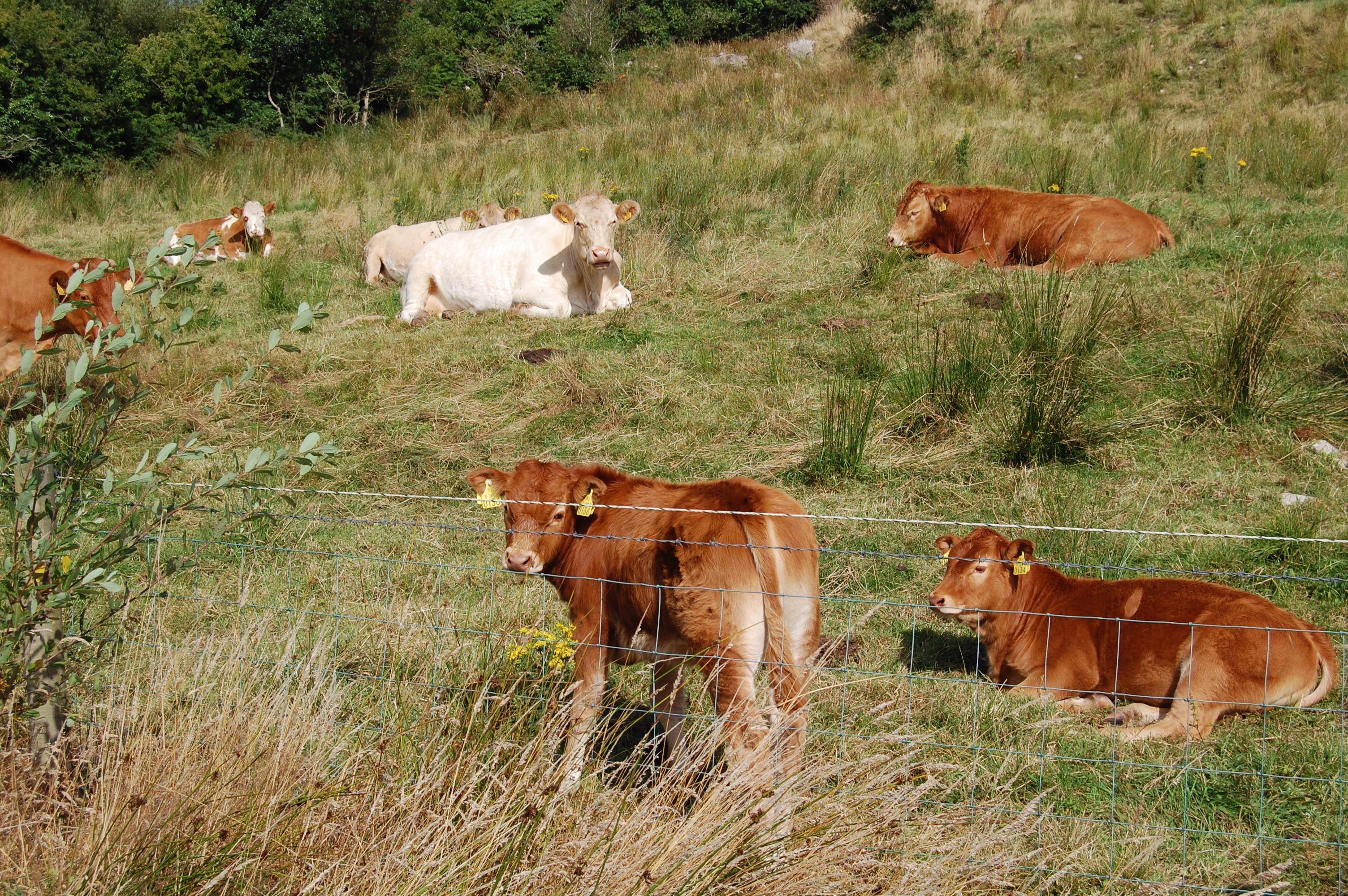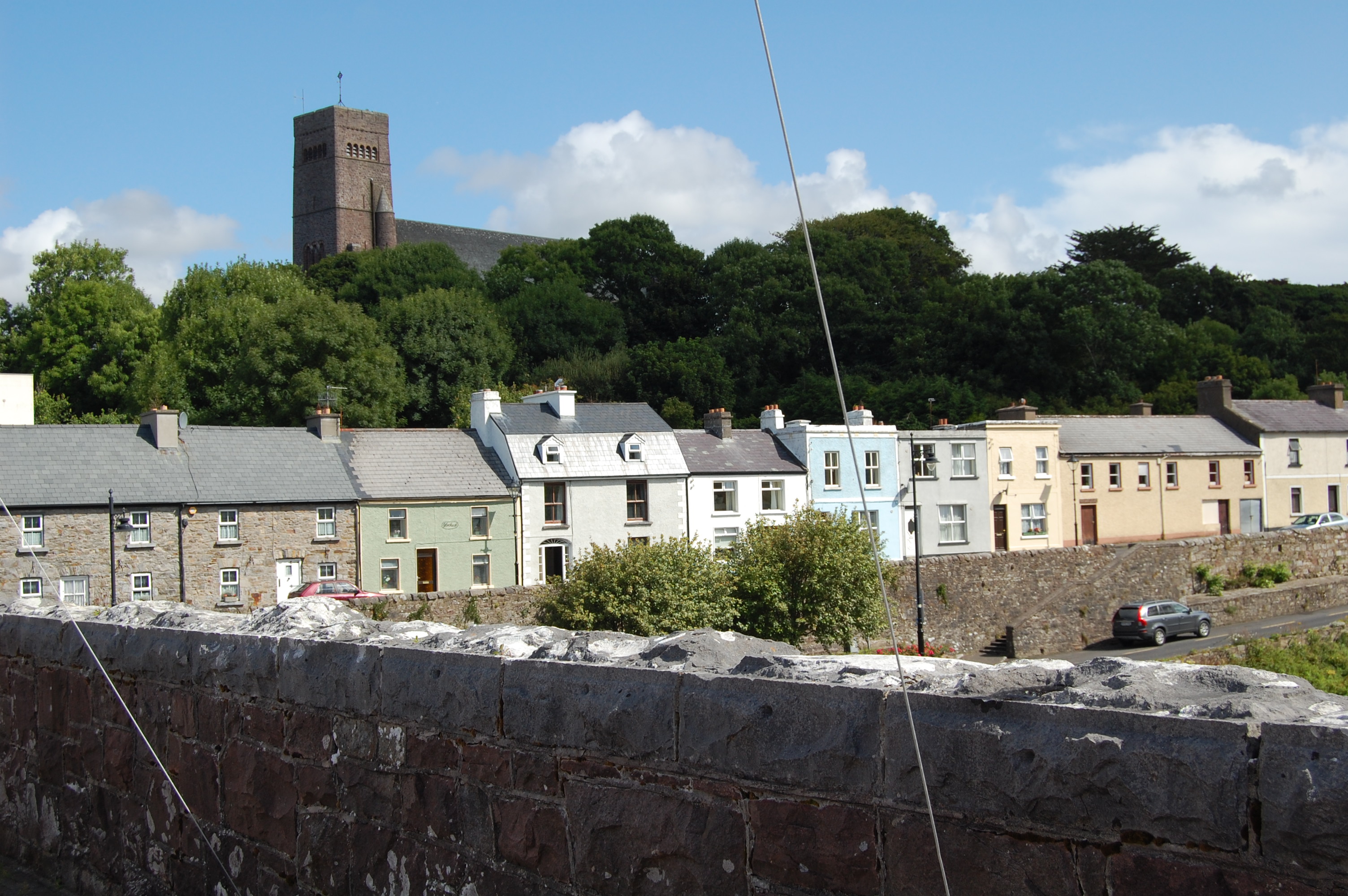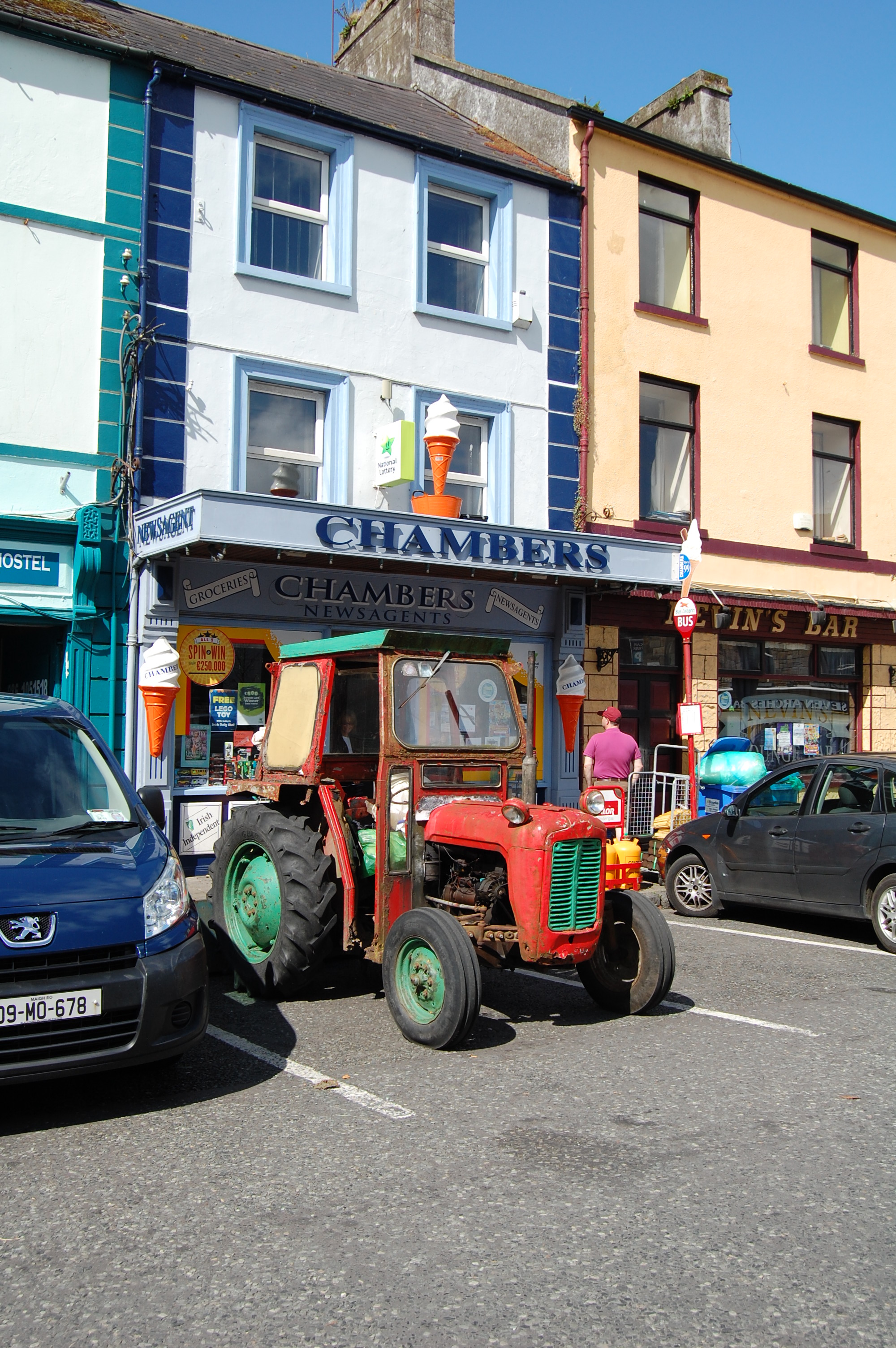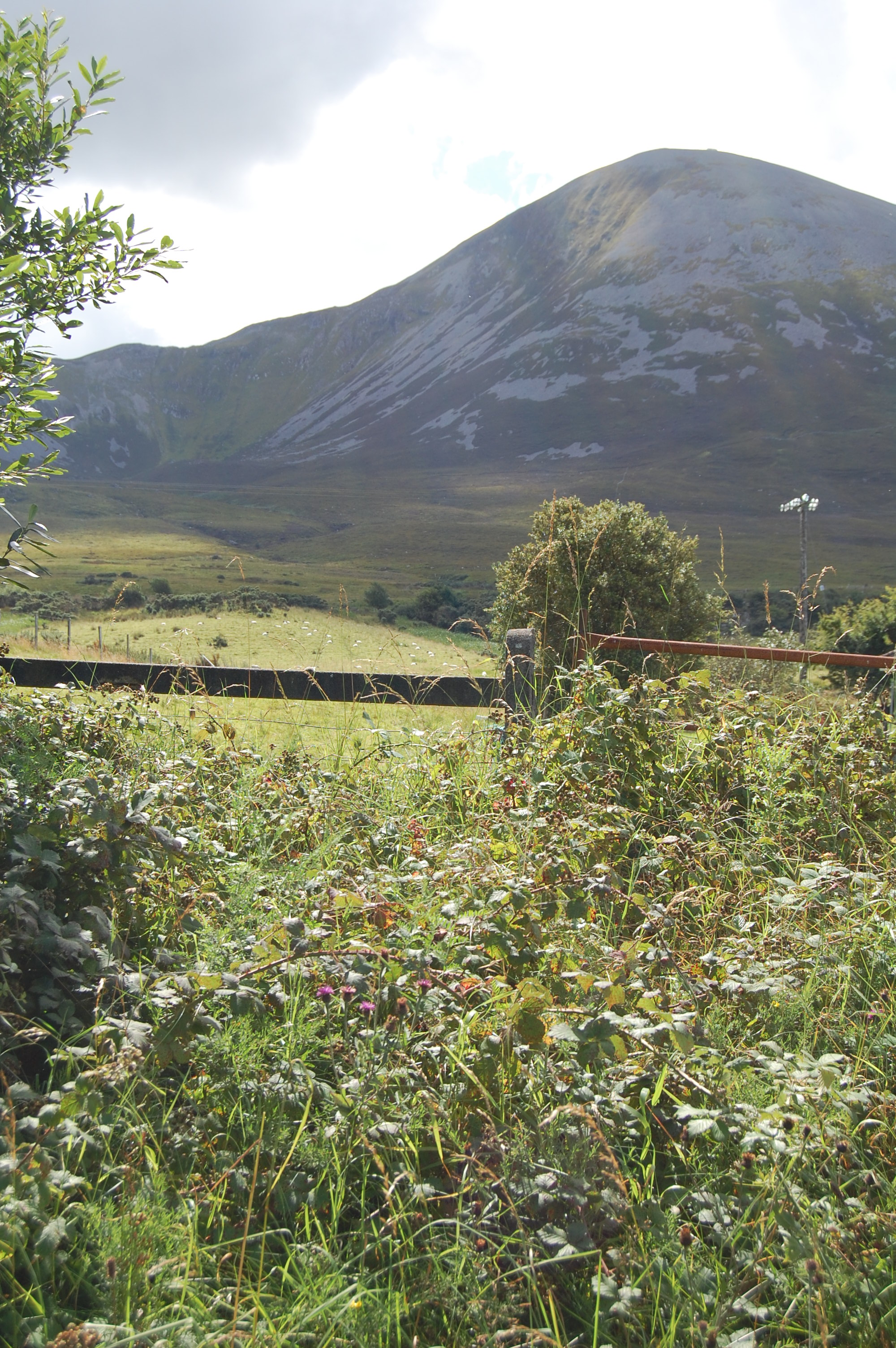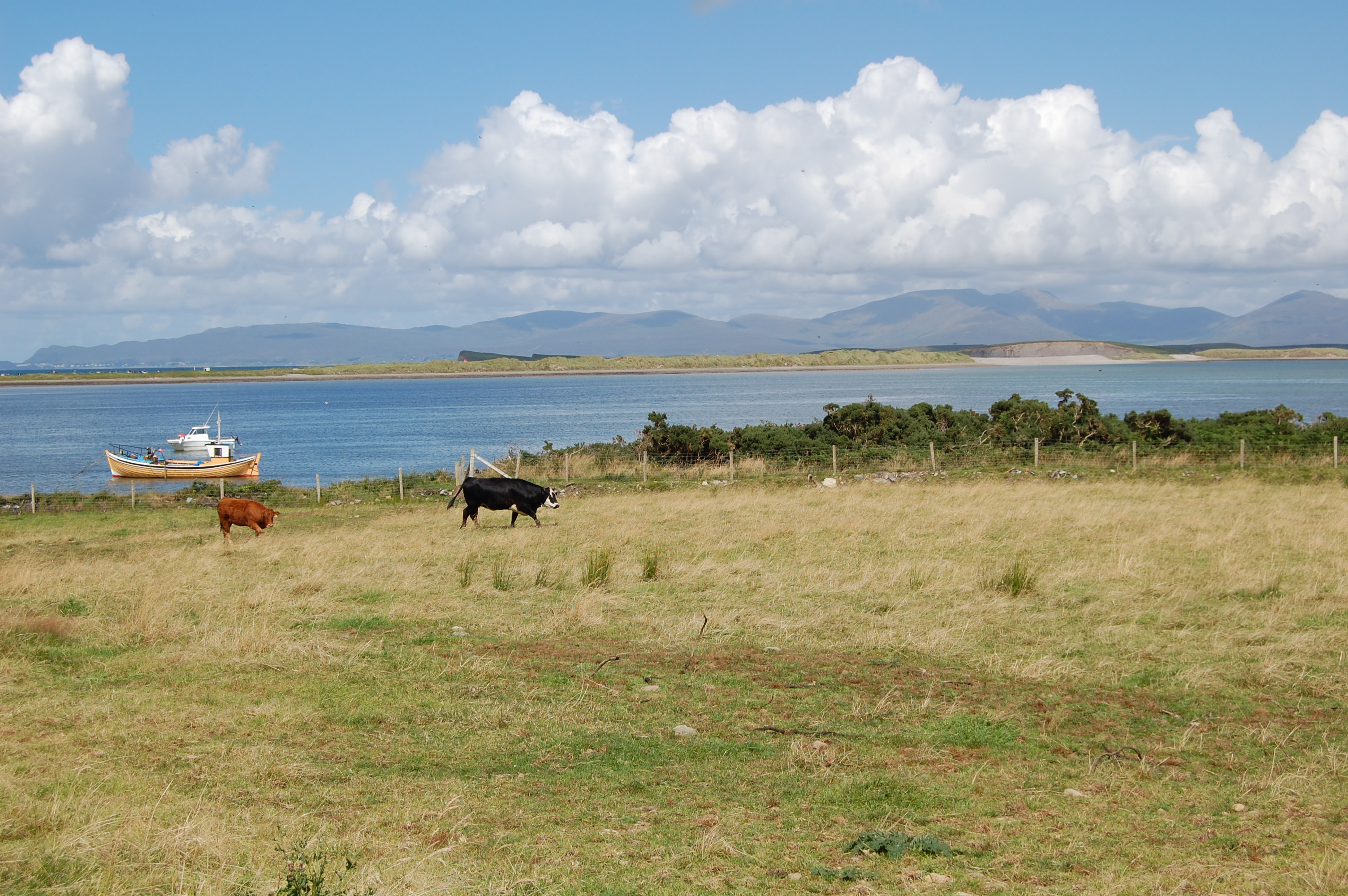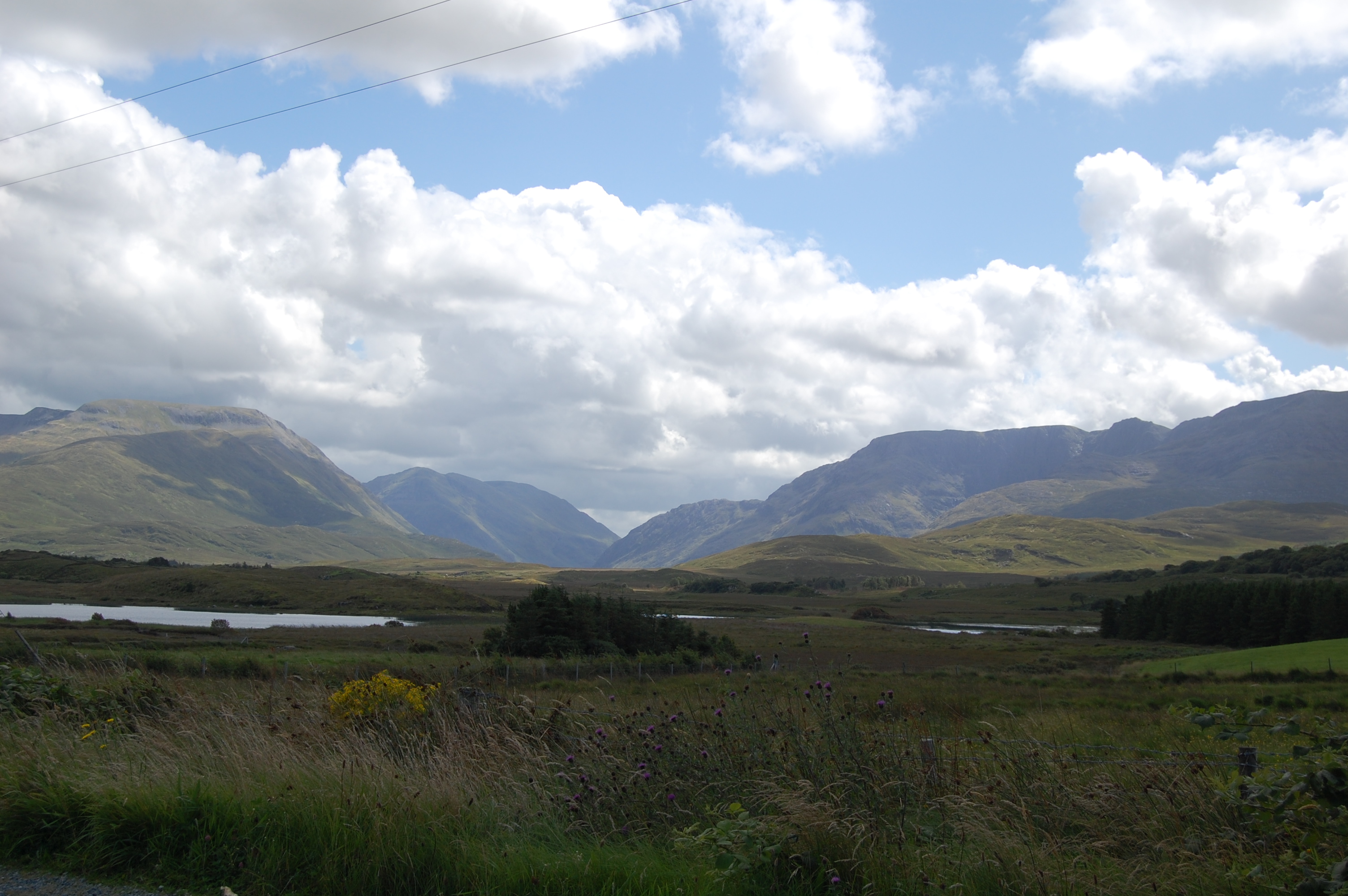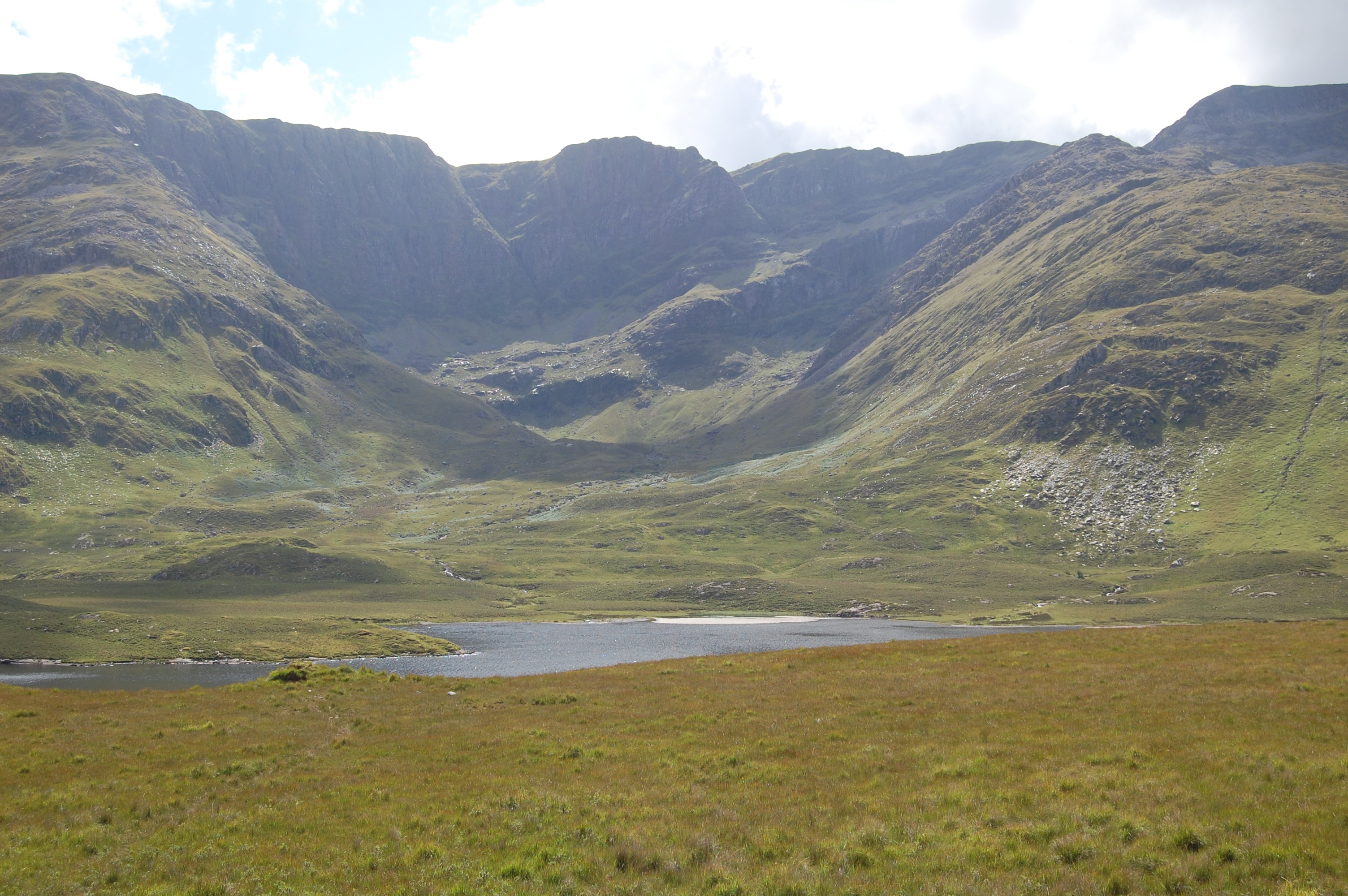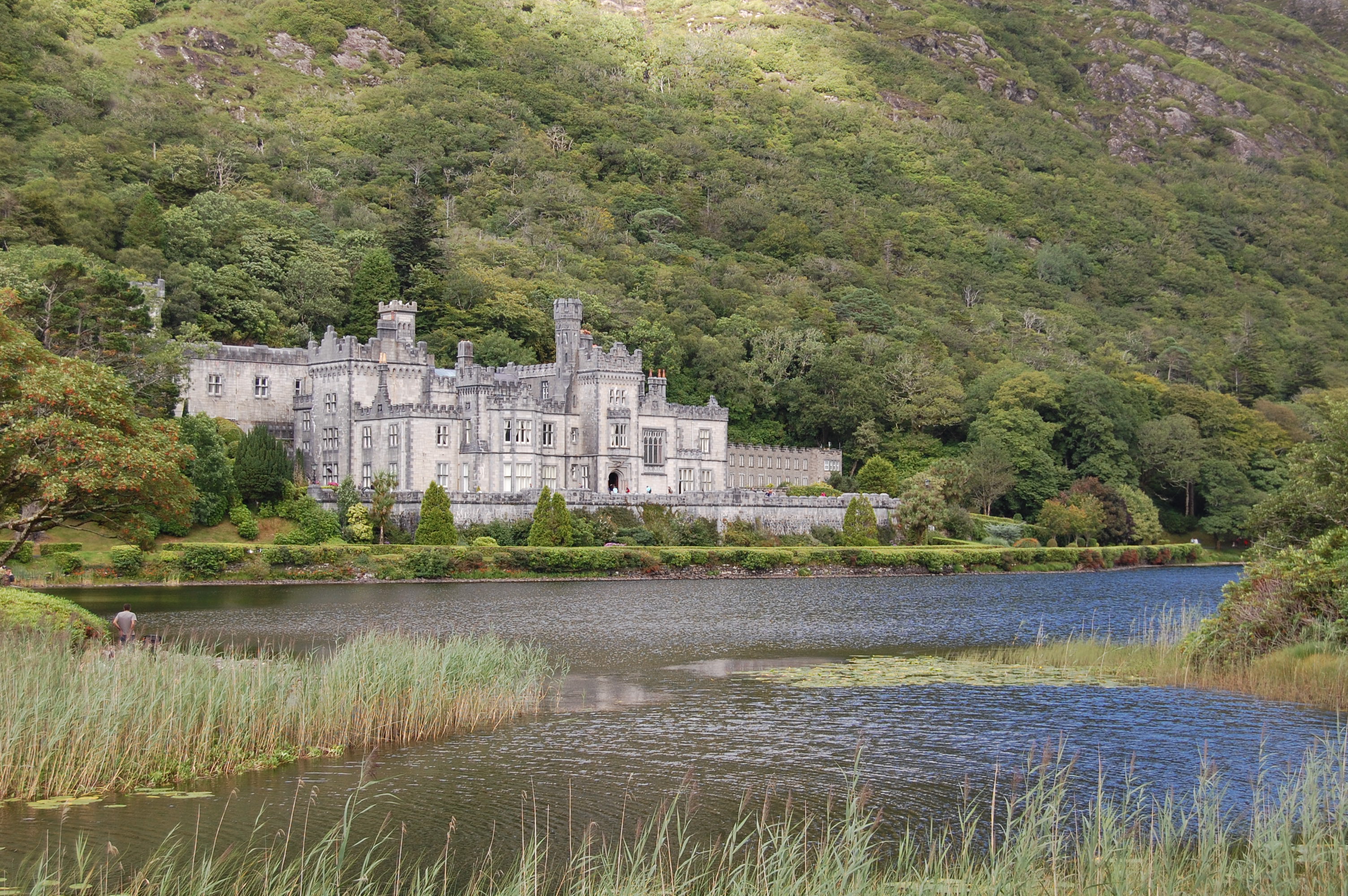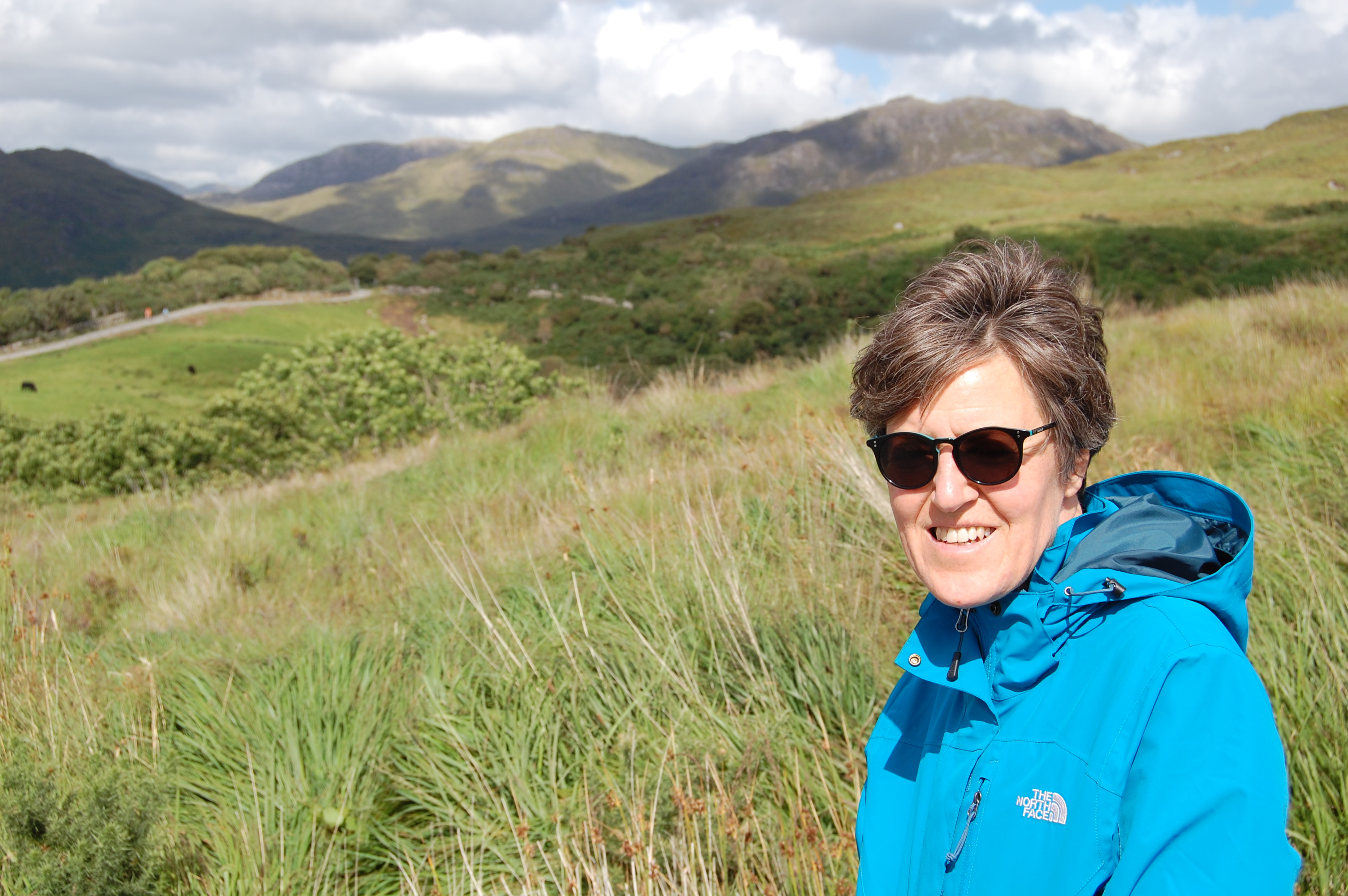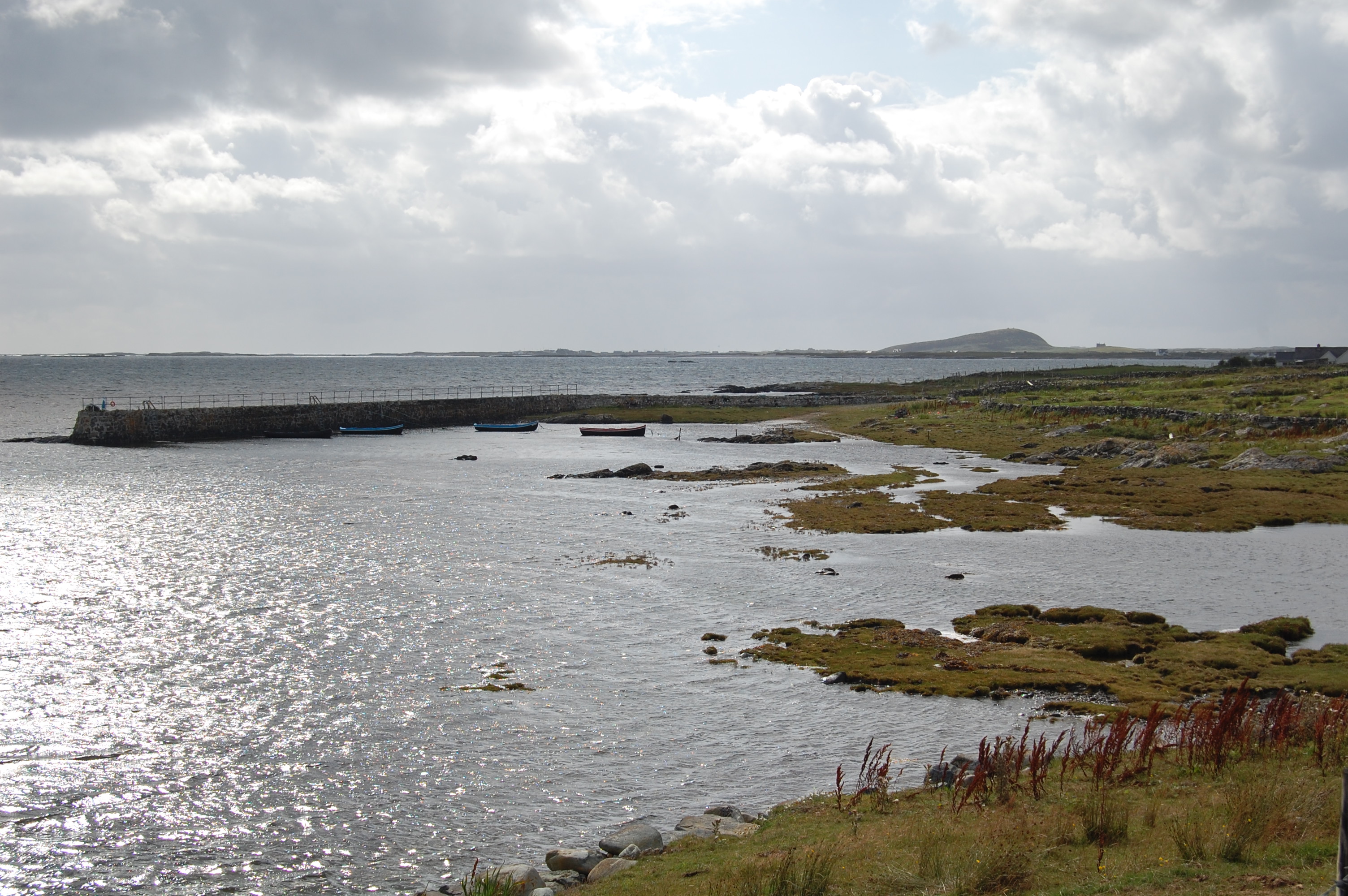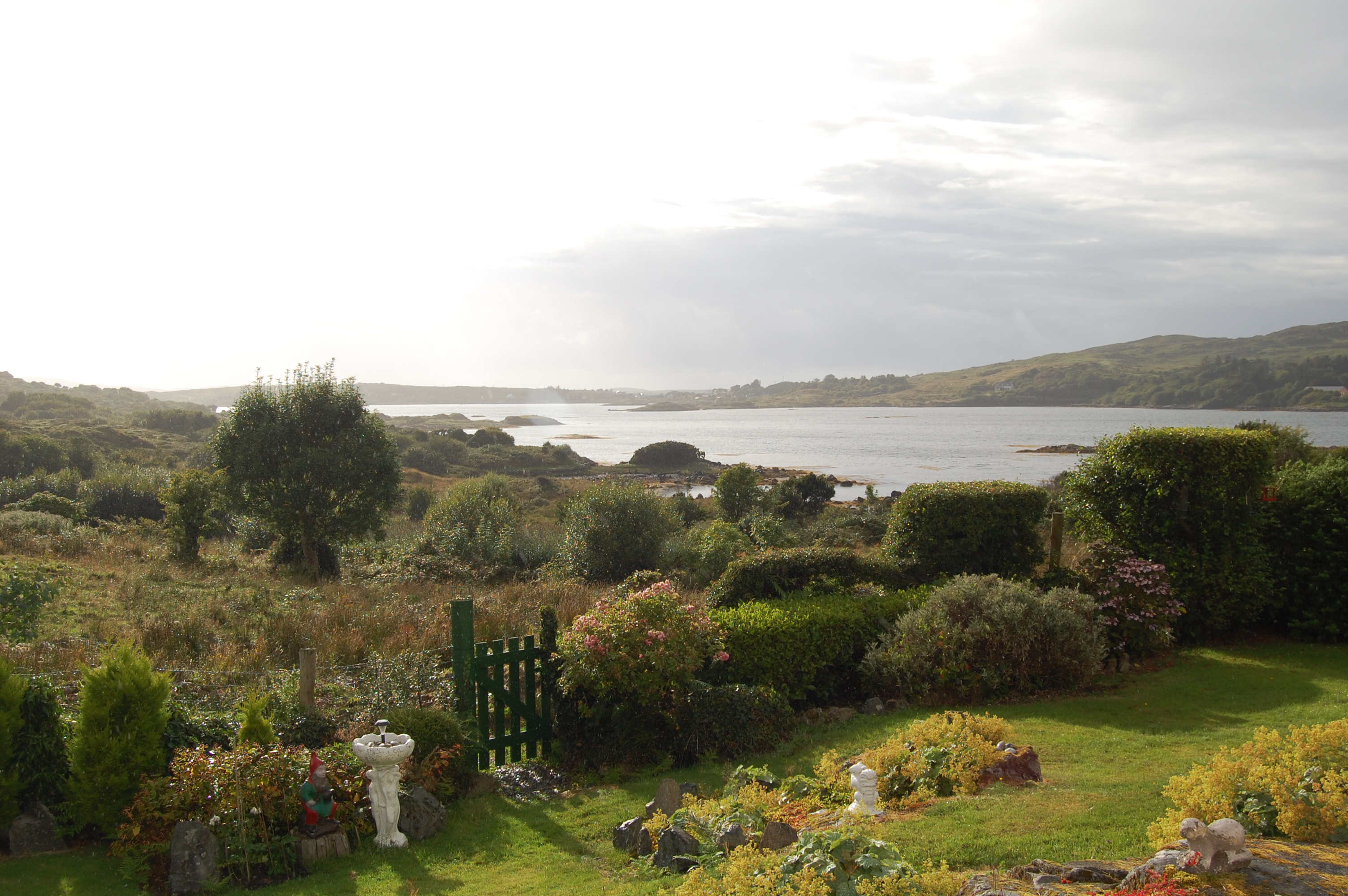Land of poets
It isn't hard to see why Ireland produced so many great artists. It is a land of unspeakable beauty--and so the challenge of finding words to capture it is all the more consuming. I won't even try, hence the many photos in this post.
We started by cycling a greenway trail between Newport and Mulrany, David frequently commenting on how the trail must have changed since its days as a rail line because the grade was too steep in places. Not what was running through my mind.
I kept thinking about how I felt like I was living inside a framed landscape painting.
Even the cows are cute.
Where Furnace Lough opens into Clew Bay sits Newport.
Here's an artsy installation using plumber's tubing to create the effect of a steam train crossing the bridge.
Next we headed along the south coast of Clew Bay. We didn't stop at Croagh Patick, a pilgrimage site where St. Patrick is said to have fasted during the fifth century. It is also the site of a coffin ship memorial to those who died fleeing the famine.
This is Clew Bay.
And THIS is the Doolough Valley in the Murrisk Mountains, through which wends the famine trail, tinging its beauty with the tragedy that is an integral part of the Irish landscape.
And here is a roadside famine memorial that speaks also to famine in Africa. I admire that the Irish don't see themselves unique in suffering, but part of a long chain of misery extending through time and place.
The west of Ireland was the largest source of immigrants during the famine. While simplified history would say the land wasn't suitable for farming and so these peasants were hardest hit by the potatoe famine, it was hardly that simple. The rallying cry during the Cromwell era was "To hell or Connaught!" Connaught being the western province of Ireland through which we are traveling. The point of that phrase was that any Irish landowner on arable land (pretty much the other three provinces), would either be killed or driven onto the barren lands of Connaught. The young American colonists thought this a good idea when reassigning the natives from fertile valleys onto more hostile land.
Where was I? One emerges from the valley to travel along Killary fjord, inland to get around it. For David, this brought back memories of traveling around Scotland's fjords with his parents. Next up, Kylemore Abbey, where Benedictine nuns, when not praying, make pottery, soap, chocolate, and a range of other items.
David and I took a short hike at Connemara National Park.
This little harbor could have been in Clifden or Roundstone, but then again we saw many similar sights along the western coast.
We got hopelessly lost looking for our B&B, which was supposed to be on a finger of land jutting into Cashel Bay. Well there are lots of fingers, including those David and I used to point at each other. "I thought you knew where it was." And the heavens opened for the first time. And we found the B&B and they didn't have our booking (thanks booking.com!!). And they were full. But they called a neighbor on the next finger of land over. And that is where we ended up. This is her back yard (and our view).
